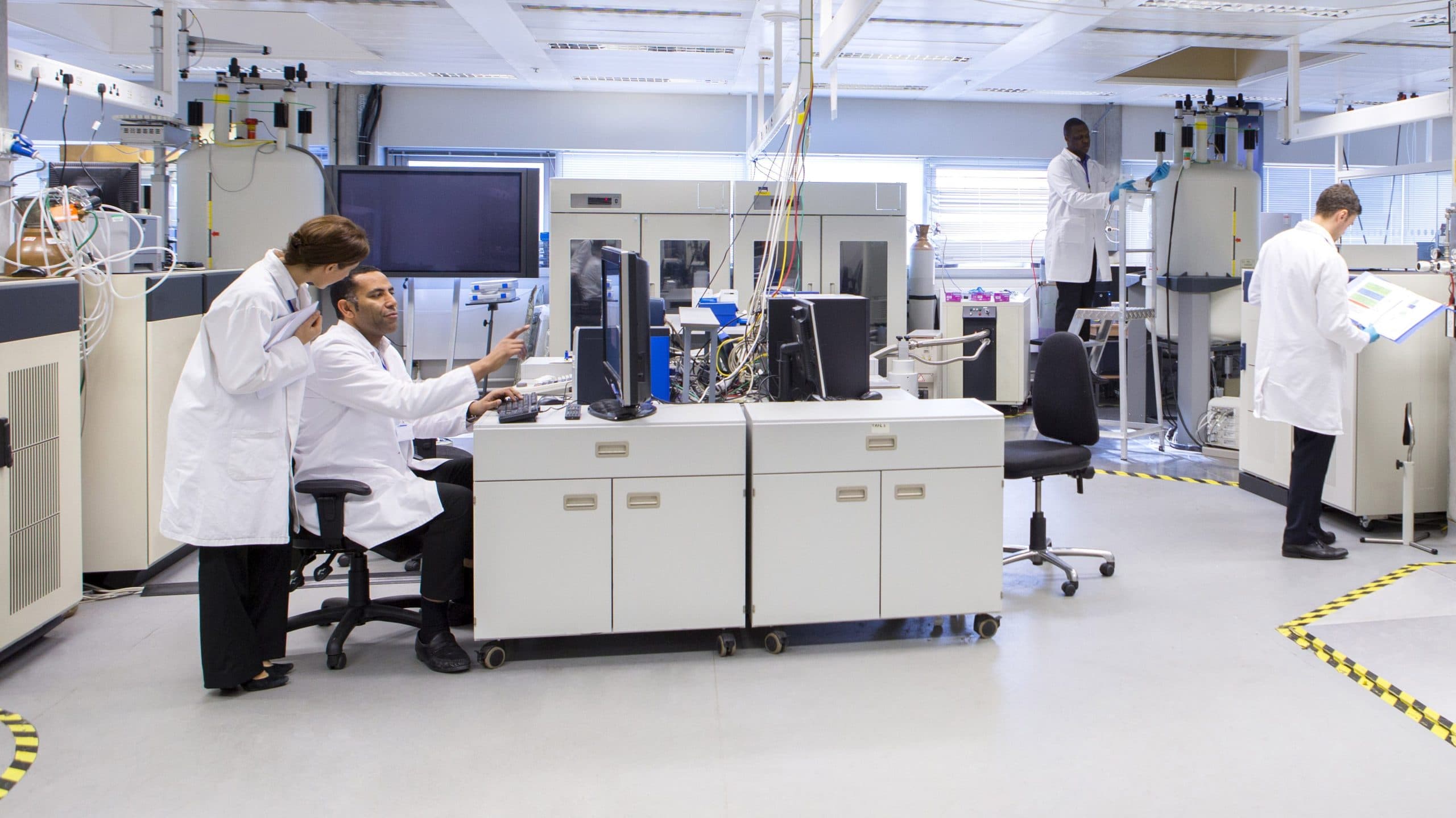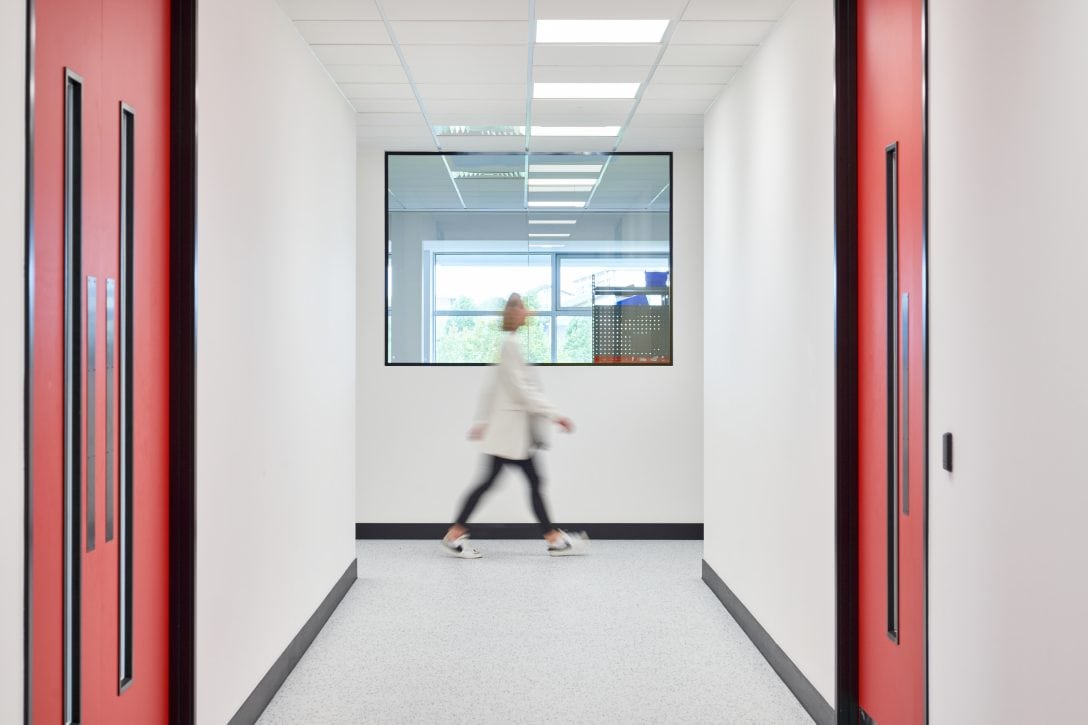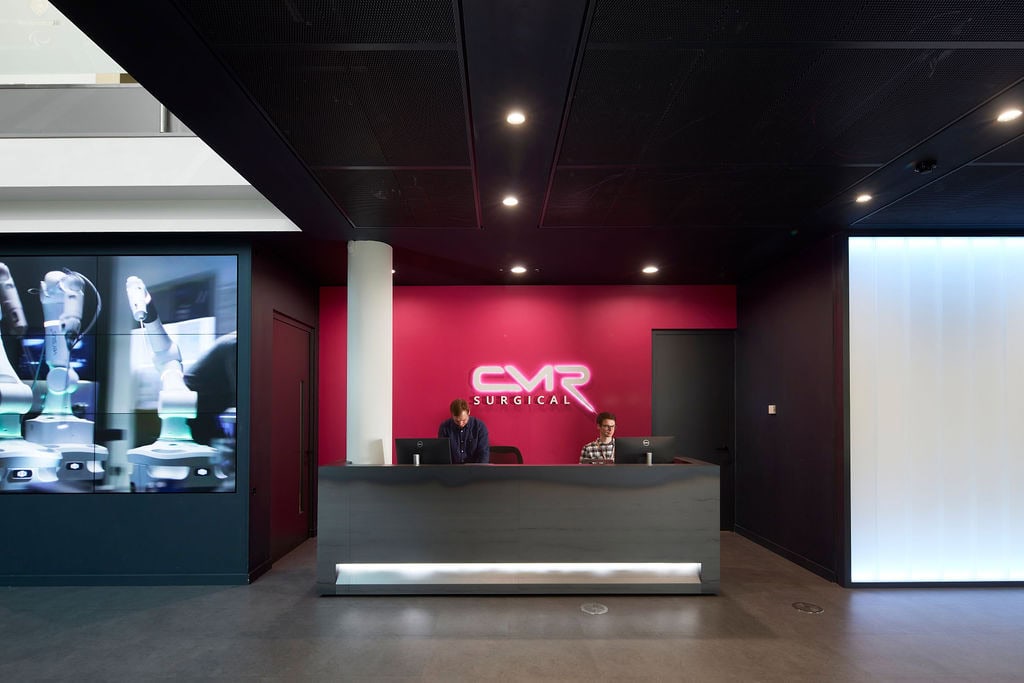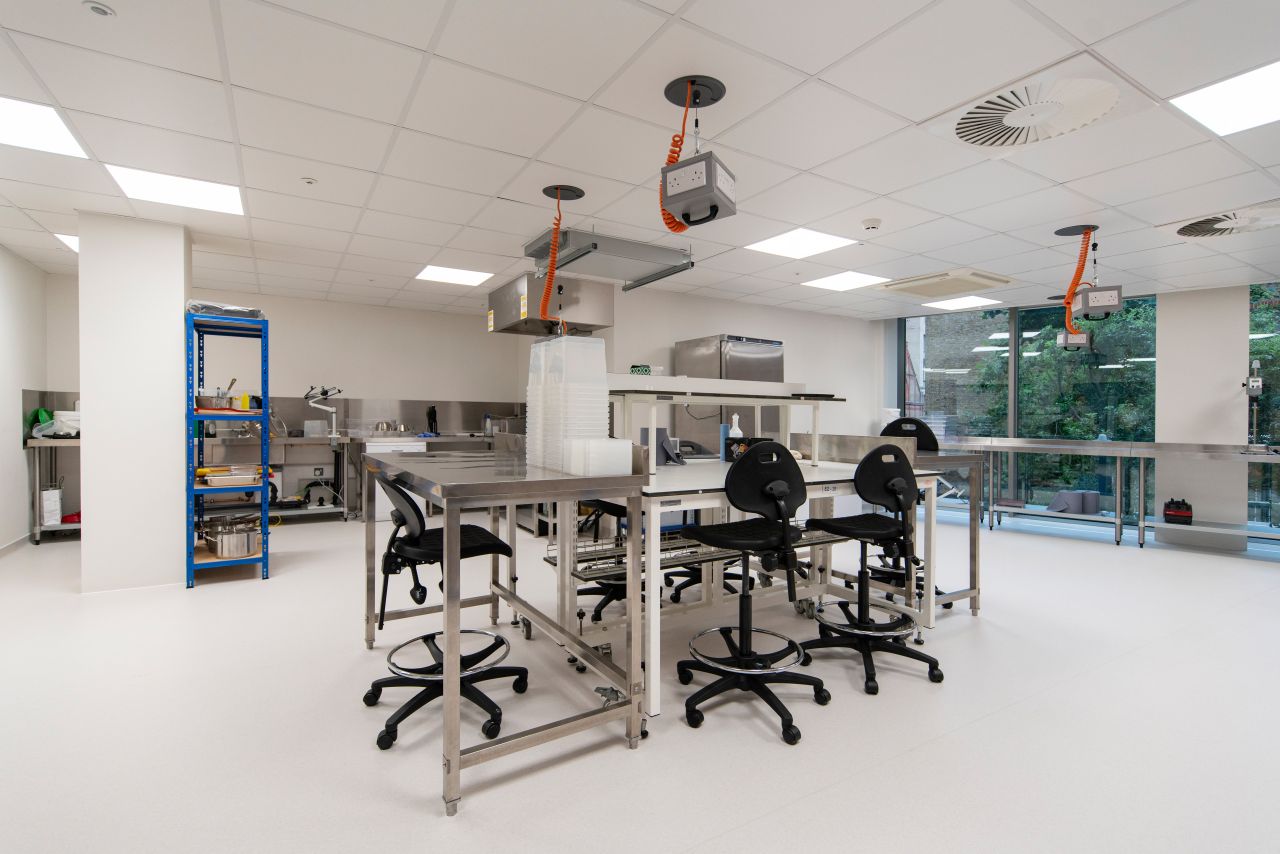Laboratory design for fresh air: creating energy efficient laboratory indoor air quality
Explore laboratory design strategies to enhance indoor air quality, achieving a harmonious balance between safety and efficiency in the lab.

Laboratory indoor air quality (IAQ) stands as a pivotal requirement in establishing a conducive and healthy working environment within lab buildings. Laboratories in particular, face unique challenges due to the regular handling of flammable chemicals, combustible substances, harmful organisms, and toxic solvents.
Lab owners and managers, driven by Environmental, Social, and Governance (ESG) commitments, prioritize the incorporation of high-quality ventilation, filtration, and replacement air systems. This commitment ensures that laboratories, along with their surrounding workspaces, provide a safe and comfortable atmosphere for work.
The AIS Design Team possesses first-hand experience in collaborating with Scientists to integrate design criteria addressing contamination risks and material usage. The key to enhancing the workflows and overall safety of lab occupants lies in identifying essential equipment and containment specifications before establishing design fundamentals.
The significance of indoor air quality in laboratory design
Understanding the fundamental importance of Indoor Air Quality (IAQ) in laboratory design is crucial. The focus should be on analysing the type of laboratory work and addressing contamination and containment.
Ranking the importance of your IAC is usually predetermined by what kind of work a lab will be doing. Prior to improving the health of IAQ, efforts must be concentrated on analysing the type of laboratory and the work flowing through it, concentrating on contamination and/or containment risks.
Containment
Containment of any hazardous materials ensures the safety of those in and around the laboratory. In recent years, it has been uncovered that IAQ may override outdoor air pollution as a priority for human health. Lab workers spend more time breathing indoor air than outdoor air during their working day. Combining this with the airtight containment required for many laboratories and the likelihood of higher concentrated air pollutants; demonstrates the substantial risk they pose.
The volume of hazardous materials worked with in the life sciences means the effect on the air is greater than other industries. Everyday work can involve the use of flammable liquids, corrosives, and toxic gases to name a few, with biosafety labs in particular manipulating a number of contagious organisms which proliferates dangerous air quality.
The inevitable conclusion for lab designers is that as much as any ongoing lab work requires limited contact to ‘typical’ human air, surrounding air also needs to be protected from the materials used in such work.
Assessing laboratory indoor air quality
Preventative design features must be incorporated into any initial concepts in order to ensure IAQ is safe and will have no impact on work flowing through a lab. Prior to this it needs to be concluded whether there are any existing risks of, or to, IAQ.
If there is a risk that the IAQ of a laboratory may be contaminated, it is first important to understand the current conditions and the threat they pose. Using this as a baseline before progressing into the design phase of a project.
On the other hand, it’s also as important to identify any working requirements that are essential in protecting raw materials from being contaminated by the air. This can be used to determine bottom level design preconditions that are essential in enabling a lab to function day to day. Executing an IAQ assessment involves a thorough investigation which is conducted to identify the existence of any present, harmful gases. In the life sciences, this is typically carbon dioxide, carbon monoxide, particulate matter and volatile organic compounds.
The AIS Life Sciences team are well equipped to handle these kinds of requirements and dedicate time to monitoring the air quality at multiple different locations within a foundry space in order to gain a good distribution of IAQ data. This testing can be done pre-design and post, ensuring any space is operating as required.

Optimal HVAC laboratory design
HVAC systems play a considerable role in the wider engineering outlook required for the design and optimisation of laboratories. They’re responsible for over 60% of the annual energy consumed by a laboratory, which means identifying the areas and spaces of a laboratory that mandate high levels of ventilation is a key constraint of the design process.
Air changes per hour is a term coined to measure the air volume that needs to be added and/or removed from a space respective to the volume of the space occupied. Different spaces within an entire building will require a different number of air changes depending on proximity to the lab itself. Designers or lab owners are obligated to calculate the air change rate required to ensure a space as sufficiently ventilated.
The number of air changes in labs that house fume cupboards, or have high containment requirements for example, will be greater than the number of air changes that occur in flexible office spaces located elsewhere in the building. In the life sciences, it’s not uncommon to have up to 15 air changes per hour, particularly for biosafety laboratories which can vary on hazard level.
Taking a collaborative approach to laboratory design can ensure that health and safety risk assessments are performed, whilst engineering systems and mechanical and electrical infrastructures are all united in one design concept.
This approach sees IAQ delivered and maintained through a variety of design features, including lab layouts and workflows, integrated air pressure systems based on room requirements, strategic airflow patterns, contaminant filtration units and automated temperature control.
Balancing indoor air quality with wider corporate ESG policy
The importance of IAQ is a non-negotiable and with innovative air quality solutions now available to the life sciences, focus has shifted onto maximising the energy needed to facilitate air conditioning.
Balancing social governance with environmental impact is key to improving the quality of the laboratory as an employee-first workspace, as well as protecting the regulatory standards required to practice safe research and production. Energy efficiency needs to be optimised through design, with the life sciences laboratory being the biggest opportunity to reach important ESG goals. Maintaining a safe, contained, and fresh laboratory indoor air quality can be achieved with energy efficiency at its core.
Get in touch to find out how AIS can embed regulated quality air into your laboratory, achieving a design that’s as fresh as the air within it.

